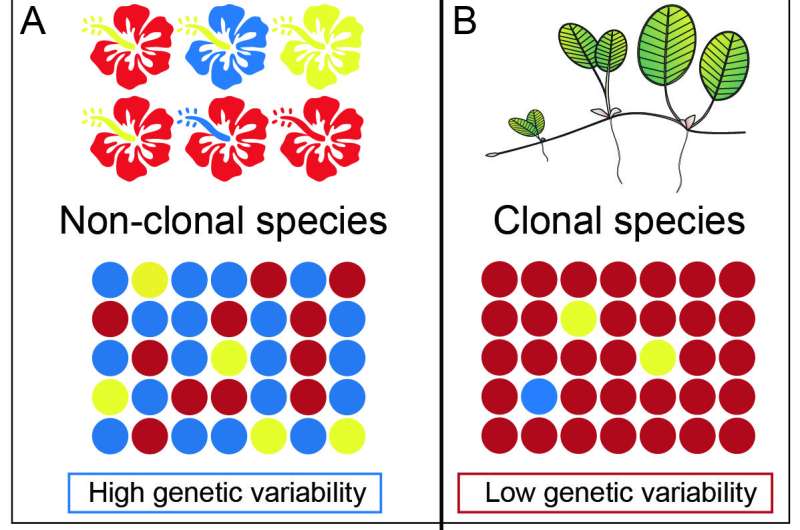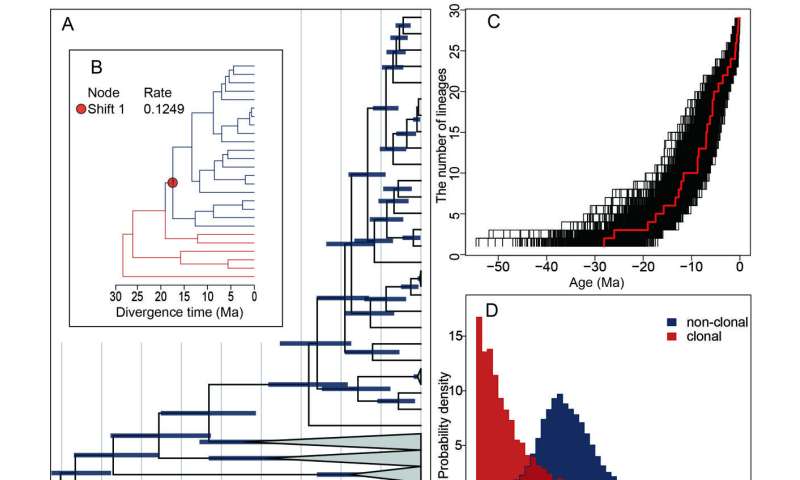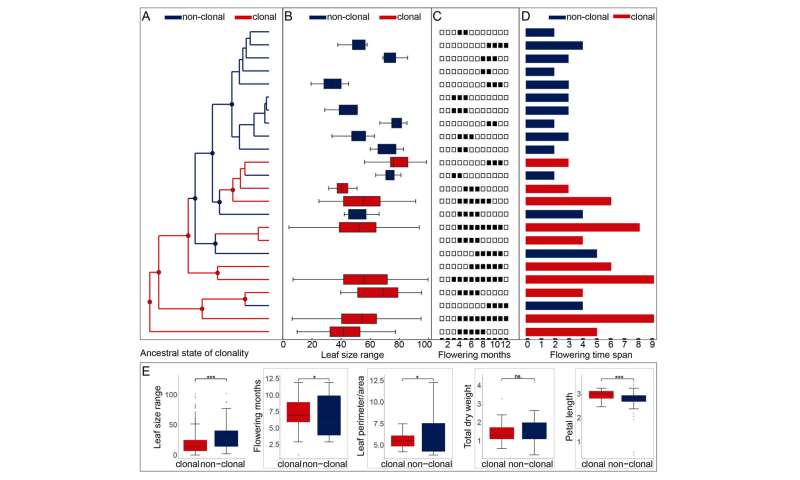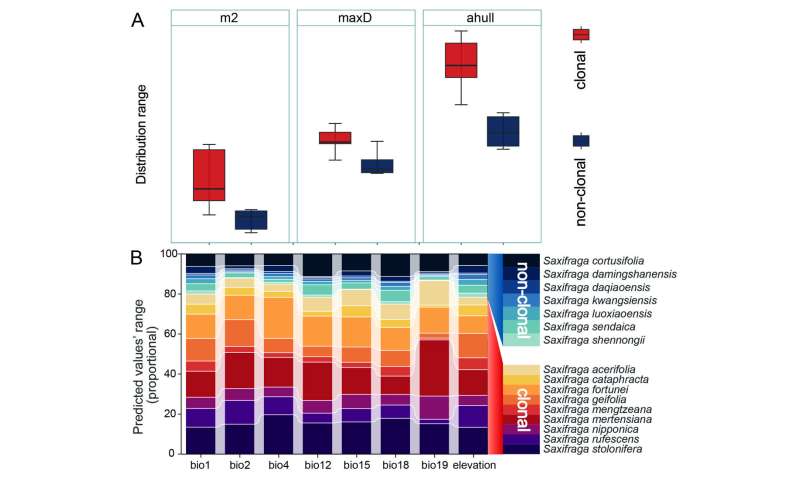This article has been reviewed according to Science X's editorial process and policies. Editors have highlighted the following attributes while ensuring the content's credibility:
fact-checked
peer-reviewed publication
trusted source
proofread
Plant lineage study provides insights into the ecological and evolutionary effects of different reproductive strategies

Hang Sun's group from Kunming Institute of Botany, Chinese Academy of Sciences has demonstrated the ecological and evolutionary effects of changes in plant reproductive strategies on phylogenetic evolution. The study is published in the journal Science China Life Sciences.
Reproduction is a key process in life history, and the maintenance and shift of reproductive strategies and the associated cost-benefit balance have long intrigued scientists. It is argued that different reproductive strategies may affect genetic diversity and diversification patterns, but the ecological and evolutionary effects of changes in reproductive strategy need to be further explored.
The research team selected Irregulares+Heterisia, the earliest lineage of Saxifraga to diverge, as the focus clade. Multiple sets of sequencing data including DNA fragments, chloroplast genomes, and low-copy nuclear gene datasets were used to reconstruct the phylogenetic relationships of this clade.
The evolutionary history of this clade was reconstructed through divergence time estimation, ancestral trait reconstruction, and diversification rate assessment. The results indicate a progressive absence of clonality in this plant lineage. Compared with the early-diverged clonal species, recently diverged non-clonal species have higher morphological and genetic diversity, and differentiation rates.
The research team further compared the differences in niche and distribution range between clonal species and non-clonal species based on the georeferenced localities of each species in this clade. Ecological niche modeling (ENM) was conducted to estimate and compare the occurrence probability of clonal and non-clonal species under different climate conditions. Clonal species have significantly larger distribution ranges and ecological niches in comparison with non-clonal species.
-

Diversification dynamics of Irregulares+Heterisia. Credit: Science China Press -

Morphological and phenological differentiations of Irregulares+Heterisia with different reproductive strategies. Credit: Science China Press -

Distribution range and environmental niche space of Irregulares+Heterisia. Credit: Science China Press
This case study indicates the ecological and evolutionary effects associated with the shifts in reproductive strategies of plant lineages. In addition, the research team argue that clonality should be regarded as a life history strategy for species to survive under different environmental conditions, rather than a dead end.
More information: Xin-Jian Zhang et al, Shifts in reproductive strategies in the evolutionary trajectory of plant lineages, Science China Life Sciences (2024). DOI: 10.1007/s11427-024-2597-9
Journal information: Science China Life Sciences
Provided by Science China Press


















